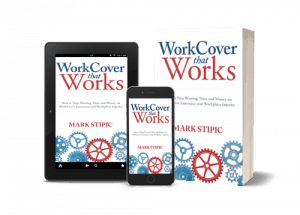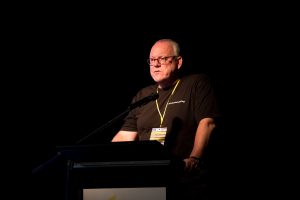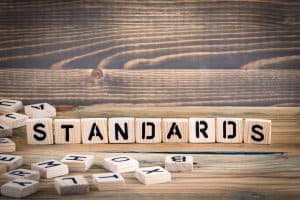Managing occupational health and safety (OHS) is most successful when it considers a range of perspectives or disciplines in identifying practicable solutions. Books are often successful in a similar multidisciplinary way but it is becoming rarer for books to contain a collection of perspectives. A new book has been published on Safety Culture which matches this multidisciplinary approach.
Category: small business
Is OHS suffering from policy AND structural capture?
 The Grattan Institute has released a report about the political influence of lobbyists. Understandably the media is giving the report a lot of attention, particularly as it identifies lobby groups that have more access to politicians than other groups and how public interest policies have failed after intense lobbying. But the report also addresses the matter of “policy capture”. Although the report analyses the activities of lobbyists, perhaps research could be undertaken into the high level of policy influence on workplace health and safety matters from a tripartite consultative structure that no longer reflects the Australian workforce.
The Grattan Institute has released a report about the political influence of lobbyists. Understandably the media is giving the report a lot of attention, particularly as it identifies lobby groups that have more access to politicians than other groups and how public interest policies have failed after intense lobbying. But the report also addresses the matter of “policy capture”. Although the report analyses the activities of lobbyists, perhaps research could be undertaken into the high level of policy influence on workplace health and safety matters from a tripartite consultative structure that no longer reflects the Australian workforce.
In its Overview the Grattan Institute writes:
A bad day for ACCI at the Senate Inquiry into Industrial Deaths
Jennifer Low, Associate Director of the Australian Chamber of Commerce and Industry addressed the Senate Inquiry into Industrial Deaths in Perth on August 30 2018. Much of her presentation would be familiar to occupational health and safety professionals as it reflects the ideological position that the ACCI has put to countless inquiries over almost 20 years. It is fair to say that the ACCI did not have a good day at the Inquiry.
Low’s presentation commenced with a restating of the general commitments to safety and that the ACCI and its members hold the importance of OHS as a “fundamental belief”. This was followed up with
“Our employer network feels strongly that the prevention for workplace incidents, injuries and fatalities is a shared responsibility.” (page 1, emphasis added)
This
A WorkCover book that works
 Many consultants publish books on the understanding that a published work provides legitimacy and authority to their advice. Sometimes these books are vanity productions but increasingly, and particularly in the safety sector, small-run publications are appearing that are well-written, well-edited and well worth reading. The latest of these, in Australia at least, is “Workcover That Works” by Mark Stipic.
Many consultants publish books on the understanding that a published work provides legitimacy and authority to their advice. Sometimes these books are vanity productions but increasingly, and particularly in the safety sector, small-run publications are appearing that are well-written, well-edited and well worth reading. The latest of these, in Australia at least, is “Workcover That Works” by Mark Stipic.
Stipic has been planning this book for some time and developed a clear strategy for this book to address the workers compensation processes in just one Australian State – Victoria. It is not a workplace safety book but it acknowledges the role of occupational health and safety (OHS) and devotes one of its four parts to “Foundations of Success” in which Stipic discusses safety climate and culture and those management practices that minimise the likelihood of a workers compensation claim being lodged. Continue reading “A WorkCover book that works”
Business Bullshit – and how this relates to workplace health and safety
 This is an edited version of my presentation to delegates at the inaugural NSW Regional Safety Conference & Expo in Newcastle, Australia on March 17, 2018.
This is an edited version of my presentation to delegates at the inaugural NSW Regional Safety Conference & Expo in Newcastle, Australia on March 17, 2018.
The current approach to occupational health and safety (OHS) is that we shouldn’t separate it from business operations. One of the motivations for achieving success in business is to build a strong organisational culture that integrates safety.
Companies often start this task by developing Mission Statements or Pledges. Quite often these are done by talking to a lot of different people in the organisation. And I don’t know of any mission statement that hasn’t been already run through Legal and Marketing – they don’t always get run through Safety. What happens is that these statements can become more florid and more inexact, and more unclear. Some of them descend into Business Bullshit.
Concerns over ISO45001 voiced but no details provided
 The publication date for the first truly international Standard on occupational health and safety (OHS) management systems, ISO45001, the rhetoric is heating up in Australia.
The publication date for the first truly international Standard on occupational health and safety (OHS) management systems, ISO45001, the rhetoric is heating up in Australia.
New farming incident statistics
The latest statistics of farm injuries from the Australian Institute of Health and Welfare provide a useful insight in to the workplace risks of Australian farms. Given the workplace focus of the SafetyAtWorkBlog, and the articles written about the risk of working with quad bikes, the following statistics are of great interest:
“For quad bikes, almost 90% of injuries were sustained by the driver in people aged 15 and over.” (page 9)
“For injuries involving quad bikes, males accounted for two-thirds (66%) of all hospitalisations for children aged 0–14 and almost 80% of all hospitalisations for people aged 15 and over.” (page 9)
